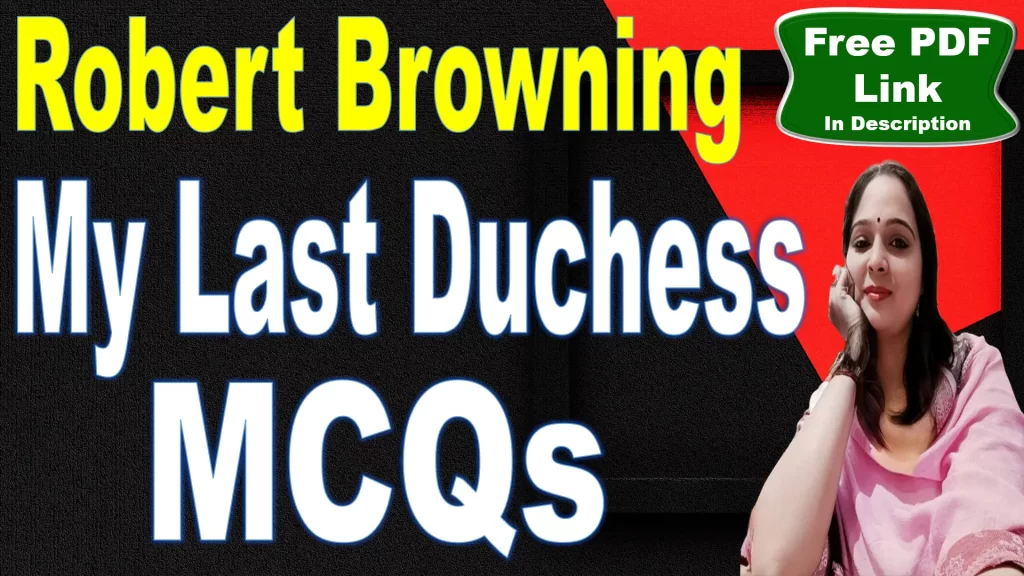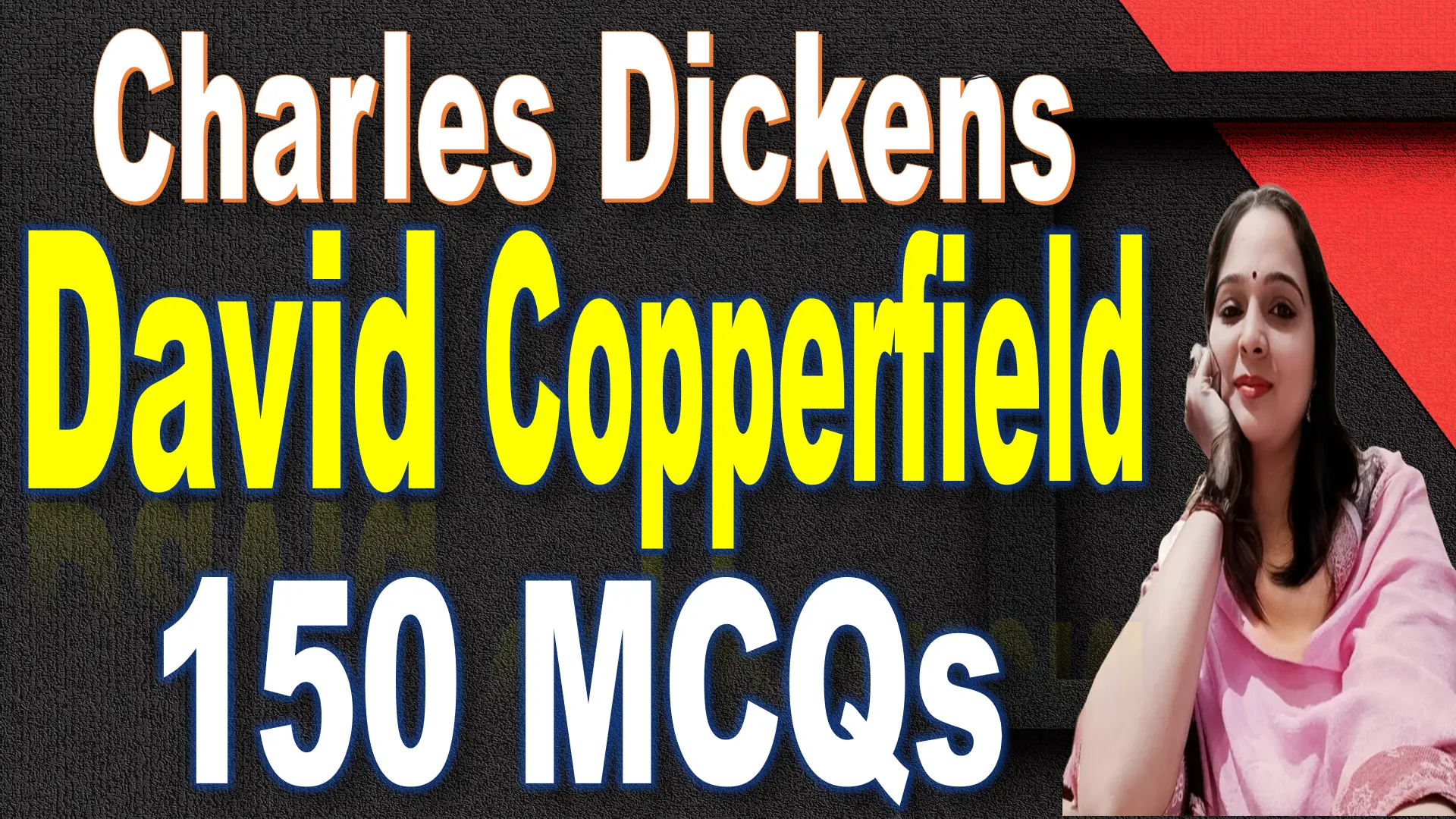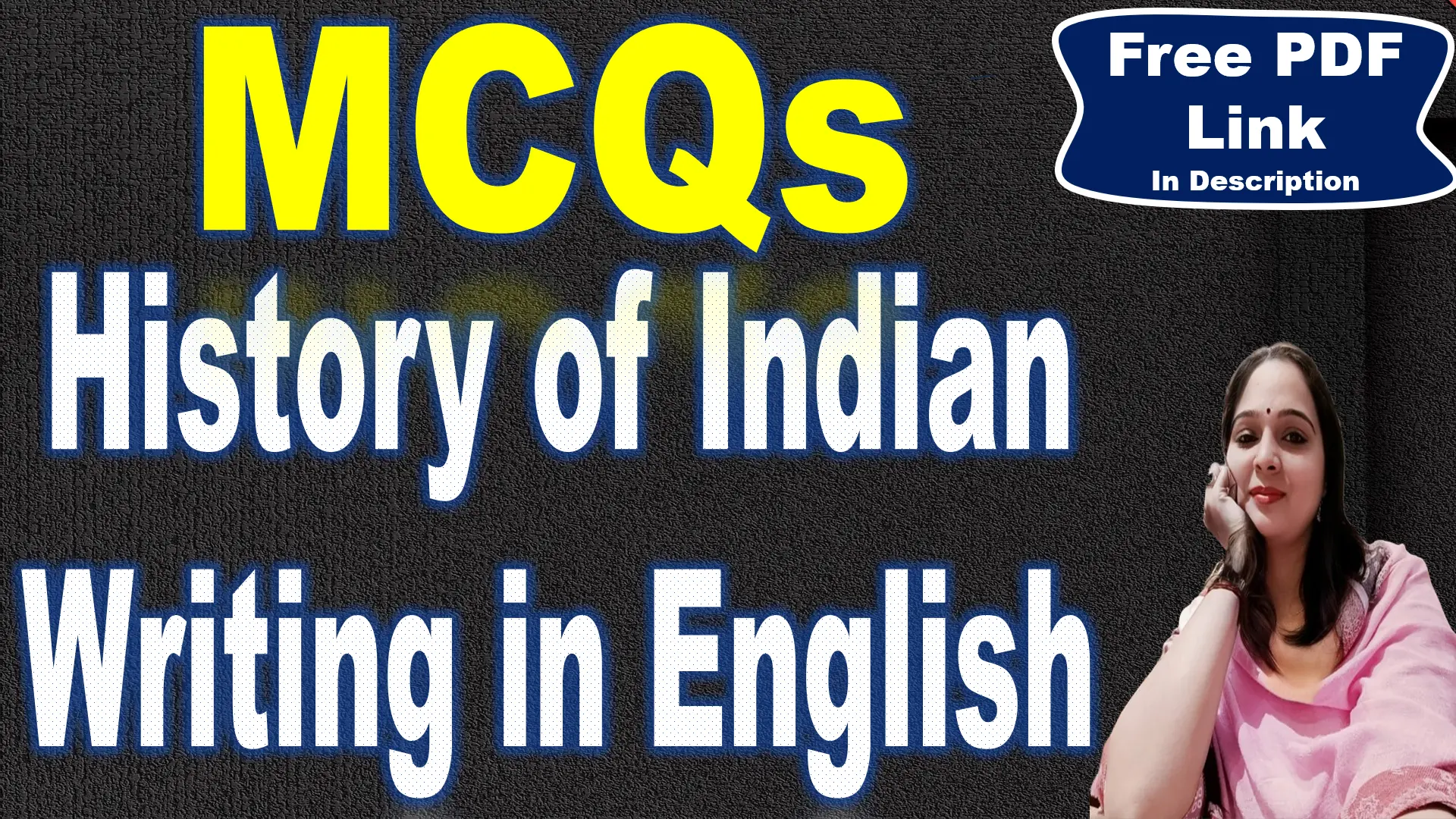
61. What poetic device does Browning use to mimic natural speech?
A. Rhyme
B. Free verse
C. Enjambment
D. Caesura
Answer: C. Enjambment
Explanation: Browning uses enjambment throughout the poem, where one line flows into the next without a pause. This technique mimics natural speech patterns and helps create a sense of continuity and urgency in the Duke’s monologue. The lack of punctuation between lines suggests the Duke’s uninterrupted stream of consciousness, revealing his obsessive and compulsive nature as he reflects on the Duchess’s actions and their consequences.
62. Which line best illustrates dramatic irony in the poem?
A. “Will’t please you sit and look at her?”
B. “I gave commands; then all smiles stopped together.”
C. “Her mantle laps over my lady’s wrist too much.”
D. “Notice Neptune, though, taming a sea-horse.”
Answer: B. “I gave commands; then all smiles stopped together.”
Explanation: This line exemplifies dramatic irony because the Duke’s casual statement about giving commands that ended the Duchess’s smiles reveals his direct involvement in her death. The reader understands the chilling implication that he ordered her death, while the Duke speaks of it almost nonchalantly. The irony lies in the fact that the Duke is unaware of how his words expose his cruelty.
63. What role does symbolism play in the poem?
A. It highlights the Duchess’s innocence.
B. It emphasizes the Duke’s obsession with control.
C. It critiques Renaissance values.
D. It glorifies wealth.
Answer: B. It emphasizes the Duke’s obsession with control.
Explanation: Symbolism plays a central role in the poem, particularly in representing the Duke’s obsession with control. The portrait, the curtain, and even the statue of Neptune are symbols of his desire to dominate every aspect of the Duchess’s life and memory. By controlling the portrait’s visibility and framing her legacy, the Duke ensures that her image aligns with his narrative, reflecting his need to assert power even in death.
64. How does Browning use allusion in the poem?
A. By referencing Neptune and Fra Pandolf
B. By alluding to the Renaissance period
C. By mentioning classical art forms
D. All of the above
Answer: D. All of the above
Explanation: Browning employs allusion in multiple ways within My Last Duchess. He references Neptune, the classical sea god, to emphasize the Duke’s power and control. The mention of Fra Pandolf, the artist, alludes to the importance of art in the Duke’s life, and the Renaissance period is evoked through the Duke’s aristocratic outlook and obsession with status. These allusions deepen the reader’s understanding of the Duke’s worldview and his need for dominance.
65. What literary device is used to depict the Duke’s pride in his lineage?
A. Metaphor
B. Hyperbole
C. Allusion
D. Symbolism
Answer: C. Allusion
Explanation: The Duke’s reference to his “nine-hundred-years-old name” is an allusion to his noble heritage, emphasizing his pride in his long family history. The Duke’s obsession with his lineage underscores his belief in the superiority of his aristocratic status and his expectation that others should revere him because of it. This allusion highlights his arrogance and entitlement.
66. Which of the following best describes Browning’s use of language in the poem?
A. Colloquial and simple
B. Formal and controlled
C. Overly sentimental
D. Detached and neutral
Answer: B. Formal and controlled
Explanation: Browning’s use of formal and controlled language reflects the Duke’s aristocratic background and his need for dominance and authority. The Duke speaks in a measured, polished manner, presenting himself as cultured and refined. However, the underlying tension in his words exposes his deep sense of entitlement and control, providing a contrast between his outward sophistication and his inner tyranny.
67. What is the significance of the poem’s rhymed couplets?
A. They mimic the Duke’s obsession with order.
B. They create a playful tone.
C. They emphasize the Duchess’s innocence.
D. They reflect the artist’s viewpoint.
Answer: A. They mimic the Duke’s obsession with order.
Explanation: The rhymed couplets in My Last Duchess mirror the Duke’s obsessive need for control and order. The formal structure of the poem reflects his rigid worldview, where everything must align according to his standards. The couplets also create a rhythmic flow that reflects the Duke’s calculated speech, further emphasizing his control over the narrative and his environment.
68. Robert Browning is best known for his mastery of which poetic form?
A. Sonnet
B. Dramatic monologue
C. Free verse
D. Epic poetry
Answer: B. Dramatic monologue
Explanation: Robert Browning is best known for his mastery of the dramatic monologue, a poetic form where a single speaker reveals their innermost thoughts, feelings, and motives, often unintentionally. This form allows Browning to explore complex psychological and moral dimensions of characters, as seen in My Last Duchess and other works, such as The Bishop Orders His Tomb at Saint Praxed’s Church and The Laboratory.
69. Robert Browning was a poet of which literary period?
A. Romantic
B. Victorian
C. Renaissance
D. Modern
Answer: B. Victorian
Explanation: Robert Browning is one of the central figures of the Victorian era, known for his mastery of the dramatic monologue. His work explores complex themes such as human psychology, morality, and relationships, fitting well with the intellectual and social changes of the 19th century in England. His career spanned the Victorian period, a time marked by rapid industrialization, the expansion of the British Empire, and evolving cultural values.
70. Which poetic form is Robert Browning most famous for?
A. Sonnet
B. Dramatic monologue
C. Ode
D. Ballad
Answer: B. Dramatic monologue
Explanation: Robert Browning is most renowned for his use of the dramatic monologue, a form in which a single character, often in a specific context or situation, reveals their inner thoughts and emotions to the reader or an implied audience. This form allows Browning to explore deep psychological and moral aspects of human nature, as seen in works like My Last Duchess and The Bishop Orders His Tomb at Saint Praxed’s Church, where the speaker unknowingly reveals their flaws.






Very interesting topic, regards for posting.